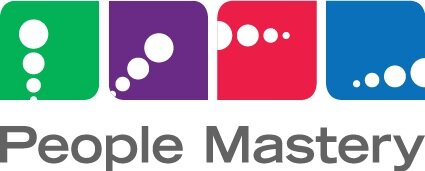The #1 leadership challenge for new leaders (and how to overcome it)
When I consider all the challenges that new leaders face - and there are many - from my experience one seems to underpin many of the others.
That challenge is the transition from ‘expert’ to ‘people leader’ - and as new leaders we may not even realise that this mind-shift is necessary in order to become an effective leader.
At the beginning of our careers, knowing all the answers is what helps us stand out against the rest - it’s a hard wired habit. And it makes us feel competent and credible.
The essence of the transition to being a people leader though, is to move from giving the answers, to coaching others to enable them to find the answers themselves.
Easy to say, hard to do. When someone comes to you for support and assistance, and you’re under the pump yourself, it’s far easier to give them a fish than teach them how to fish. But your role as a leader is to develop your people - and that only happens when you enable them to learn.
So how exactly do you do that? Here are three things you can start doing today to empower your team and become a truly effective leader.
How to take a coaching approach to leadership
1. Be present with your people
Being present is about fully tuning in to the person in front of you. Have you ever tried to have a conversation with your leader while they frown at their screen and feverishly bang out another email? Don’t be that leader! Turn away from your screen and be 100% present by using your:
Eyes - what are you observing/not observing?
Ears - what are your team members saying/not saying?
Heart - what might your team members be feeling/not feeling?
Mind - what might your team members be thinking/not thinking?
Prior to your conversations with team members, consciously set your intention to be fully present in the conversation. It also helps to consider the right time and location, to minimise distractions and focus fully.
2. Listen intently
The acts of being present and listening are interwoven, and taking the time to be present first dramatically increases your ability to listen effectively.
I’m sure you know most of the traps to avoid when listening, such as being distracted, interrupting, making assumptions and not allowing sufficient time for the conversation (also known as the ‘I’m too busy’ trap).
However, the most common trap I hear is the ‘Yes, but…’ trap. ‘Yes, but…’ shuts down conversations.
Imagine a team member approaches you with an idea and your answer begins with ‘Yes, but…’. Here’s an example:
Team member: ‘I was thinking it might be good to have a standing agenda item at our weekly team meeting to cover any safety incidents that have occurred over the past week?’
You: ‘Yes, but our meetings already run over time regularly and we can’t keep making the meeting longer.’
Their takeaway? ‘My idea was bad.’ The likelihood of them coming to you again with an idea? Slim. And the opportunity for learning and growth is gone.
The antidote? ‘Yes, AND…’
As in, ‘Yes, I agree that would be useful, and I’m also thinking about how full our meeting agendas already are. What are your thoughts on how we could manage that?’
Using ‘yes, and…’ enables you to acknowledge the contribution from your team member as well as allowing you to offer an alternate or additional view.
What about when you disagree completely with what the other person has put forward? You can still respond ‘Yes, and…’. It may seem counterintuitive at first, but with practice it can elicit excellent results, and will keep the conversation going in a constructive direction rather than shutting it down. Not convinced? Try it at home. Notice what happens. Here’s one that is likely to be familiar to many: ‘Yes, I hear what you’re saying about how much stuff we have stored in the garage. And I also don’t want to be hasty and give or throw away things that we may discover we need in three month’s time.’
3. Ask great questions
So you’ve nailed the presence and the listening, and keeping the conversation open with ‘yes, and…’. Time for the third element of building your coaching approach: asking questions that open up the conversation.
We call them ‘powerful’ questions. Reacquaint yourself with your inner 3-year old - they ask the best questions! Questions like ‘what’, ‘how’ and ‘why’ - these are what we call ‘open questions’ because they require an actual response, not just a yes or no, and they ‘open up’ the discussion and keep it flowing.
By extension, aim to limit your use of closed questions like ‘can you..’, ‘do you..’, ‘will you..’ - the questions that mostly only elicit a yes or a no and/or have an implied ‘suggestion’ in them (‘Should you check with Legal before you go ahead with that?’).
Open questions will stretch your team members and encourage them to put forward their own ideas and thoughts. A great question to add to your kit bag to provoke even more ideas and deeper thinking is, ‘And what else?’
And finally, let silence do the heavy lifting for you - don’t fill the space. Ask an open question, then wait. You’ll be amazed at what your people can come up with when you provide them with a great question and the opportunity to come up with a spectacular answer.
Replacing your ‘expert, advice-giving’ skills with coaching skills takes time and conscious effort. But doing so will develop your people, encourage new ideas and ultimately enable your team to achieve results they never thought possible. And you can truly become the leader you aspire to be.
For more on developing your coaching approach, check out Chapter 5 in my book ‘on your marks, get set… LEAD!’ Find our more here.
